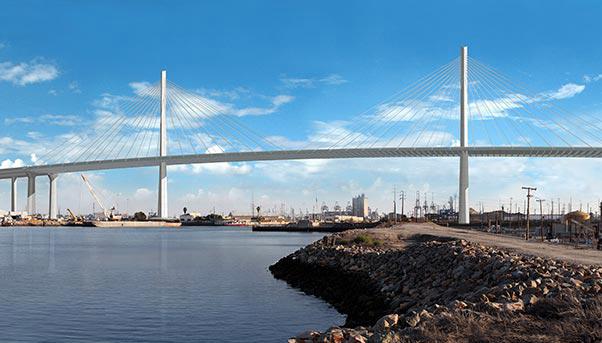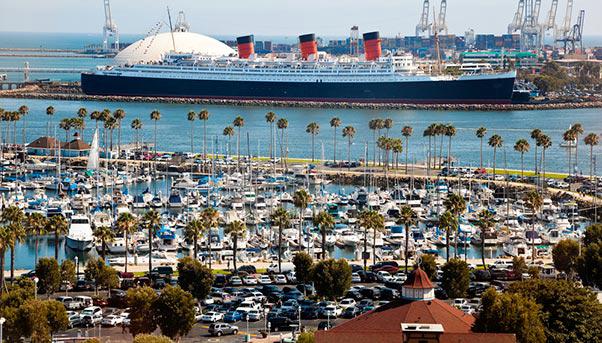
The construction of a new cable-stayed bridge in Long Beach, California is proving to be a complex task from a technical as well as a logistical perspective because it has to be done without halting port traffic by land or sea.
The bridge, which will adopt the same name - Gerald Desmond – as the old structure it is replacing, is deemed a strategic piece of infrastructure for the United States because it links Long Beach with Terminal Island where one of the country’s biggest ports is located. Under the bridge will pass ships heading to the port, whose activities involve not only Long Beach but Los Angeles, too. Emphasizing the importance of this infrastructure, the official site of the $800 million project indicates how 15% of the country’s cargo traffic by sea will pass under the bridge. With a vertical clearance of 205 feet (62 metres), it will be high enough to allow for the passage of the huge post-Panamax ships. It will rank among the highest of its kind in the country. But the contribution that the bridge will have will not only be commercial. Its very construction, which should be completed by 2018, will create nearly 3,000 jobs. It will also help reduce traffic congestion by offering three lanes in either direction – one more than the old bridge it is replacing.
The work – formally known as the Gerald Desmond Bridge Replacement Project – which is being executed by a joint-venture involving Salini Impregilo, is part of the Federal Strategic Highway Network, which is a series of infrastructure considered strategic for the development of the country. Financed by the California Department of Transportation and the Port of Long Beach with the support of the U.S. Department of Transportation and the Los Angeles County Metropolitan Transportation Authority, the project foresees the construction of two access ramps running for about 2.5 kilometres and the main section of the bridge stretching over a canal. With 352 foundation piles, the bridge will have two towers each 160 metres high.

Keeping road, rail and sea traffic flowing since work began in 2012, the year work began, has resulted in the transfer of many services and the overcoming of several impediments such as the presence of a power station, oil wells and a railway line. It has been a complex but necessary task to accommodate the infrastructure of Long Beach to the growing traffic on sea and land, bringing to life a structure that respects the most stringent anti-quake standards.
Although the old Gerald Desmond Bridge dates back some 50 years, it is not the first structure to stretch over the canal. The first bridge was built in 1908 by Salt Lake Railway and it consisted of a single railway line. It was replaced in 1930 with the Henry Ford Bridge as the sole link to Terminal Island. The successor to that bridge was built during World War II to meet the needs of the U.S. Navy. It was able to open and close to allow for the passage of big ships. This structure remained operative until the 1960s when construction of the Gerald Desmond began. Opened in 1968, the bridge followed the economic and industrial development of Long Beach and the rest of California. Since this development has never slowed down, it needs to be served by a more modern and efficient infrastructure, a unique piece of engineering that will soon come to being.


